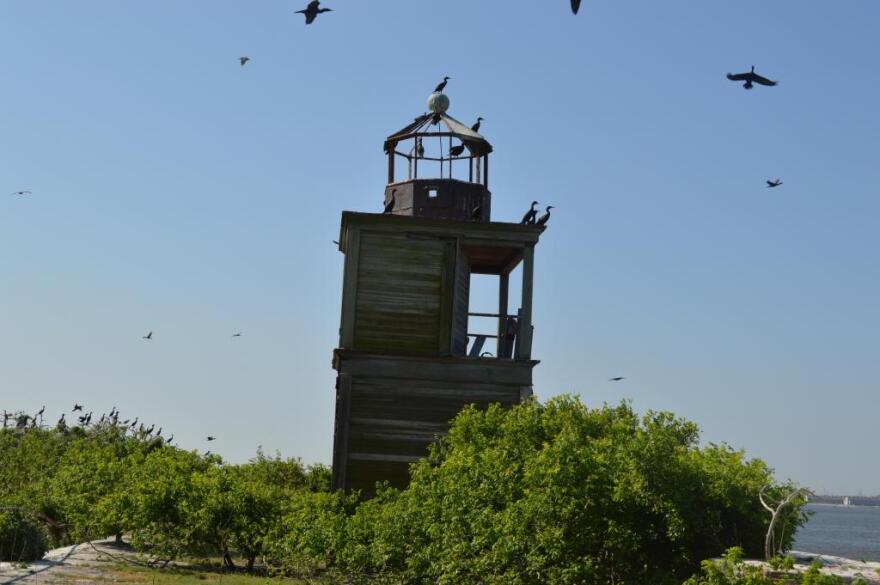It was just after dawn when I set out paddling in my kayak to find nature in one of the least natural places on Earth.
I had launched into the Patapsco River from Fort Armistead Park near the base of the Francis Scott Key Bridge south of Baltimore. Truck traffic roared overhead on Route 695. Ahead of me, the morning sun sparkled silver in a rippling path toward the old Sparrows Point steel mill. Behind my back rose the smokestacks of a pair of coal-fired power plants, a chemical factory, sewage plant, and the mounded back of the city’s Quarantine Road landfill.
But the sky was blue, the breeze was balmy, and out on the water I felt away from it all.
In the distance, I saw the outlines of an island covered in trees, with a squat rectangular lighthouse near the center.
Paddling closer, it became clear that it was a manmade structure: an abandoned fortress, with weather-streaked, stone walls, tufted with grass and featuring an intimidating row of cannon ports whose iron doors had rusted long ago.
This was Fort Carroll, built by the Army Corps of Engineers in 1847 to defend Baltimore from naval attacks like the one the British had launched from near this location three decades earlier in the War of 1812.
It is hexagonal in shape, about three and a half acres, with an impressive stone pillared entrance. And it was designed, interestingly enough, by Army Colonel Robert E. Lee to defend the United States just a few years before he joined the Confederacy and waged war on the U.S.
Fort Carroll, named after Charles Carroll, a signer of the Declaration of Independence, never saw combat. And after the Army packed up and left in 1921, the island became the subject of various schemes – including grand plans to turn it into a casino, a prison and even the base of a Statue of Liberty-scale monument to Lord Baltimore with an electric sign proclaiming “Welcome to Baltimore!”
None of these dreams ever materialized. And today, the only way into the vacant fortress is by scaling its barnacle-encrusted walls. I tied up my kayak near the stone entrance, and used a rope to hoist myself, hand-over-hand, up the wall into the entryway.
Inside the fort is another world. An arched entryway room has a spiral gothic-style stone spiral staircase leading up to the left and a dirt floor littered with thousands of bones.
Walking carefully over them, out into the overgrown courtyard, it became clear where the bones came from. Thousands of birds, mostly double-crested cormorants, but also great egrets, night herons and seagulls, have seized control of the island. The birds turned an unruly forest of trees, bleached white from guano into a cacophonous condo complex of hundreds of nests, where they guarded their eggs.
Most surprising to me were the croaking conversations of the black, serpent-necked cormorants, which sounded like hogs...or demons.
It was a strange place to find a flourishing of wildlife: inside a temple of war, with a highway bridge overhead and smokestacks nearby. But protected by these stone walls, in their own private Garden of Eden, these birds were hatching their young, making new life -- multiplying and thriving amid our neglect and forgotten past.




